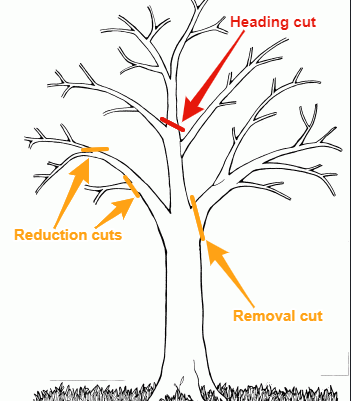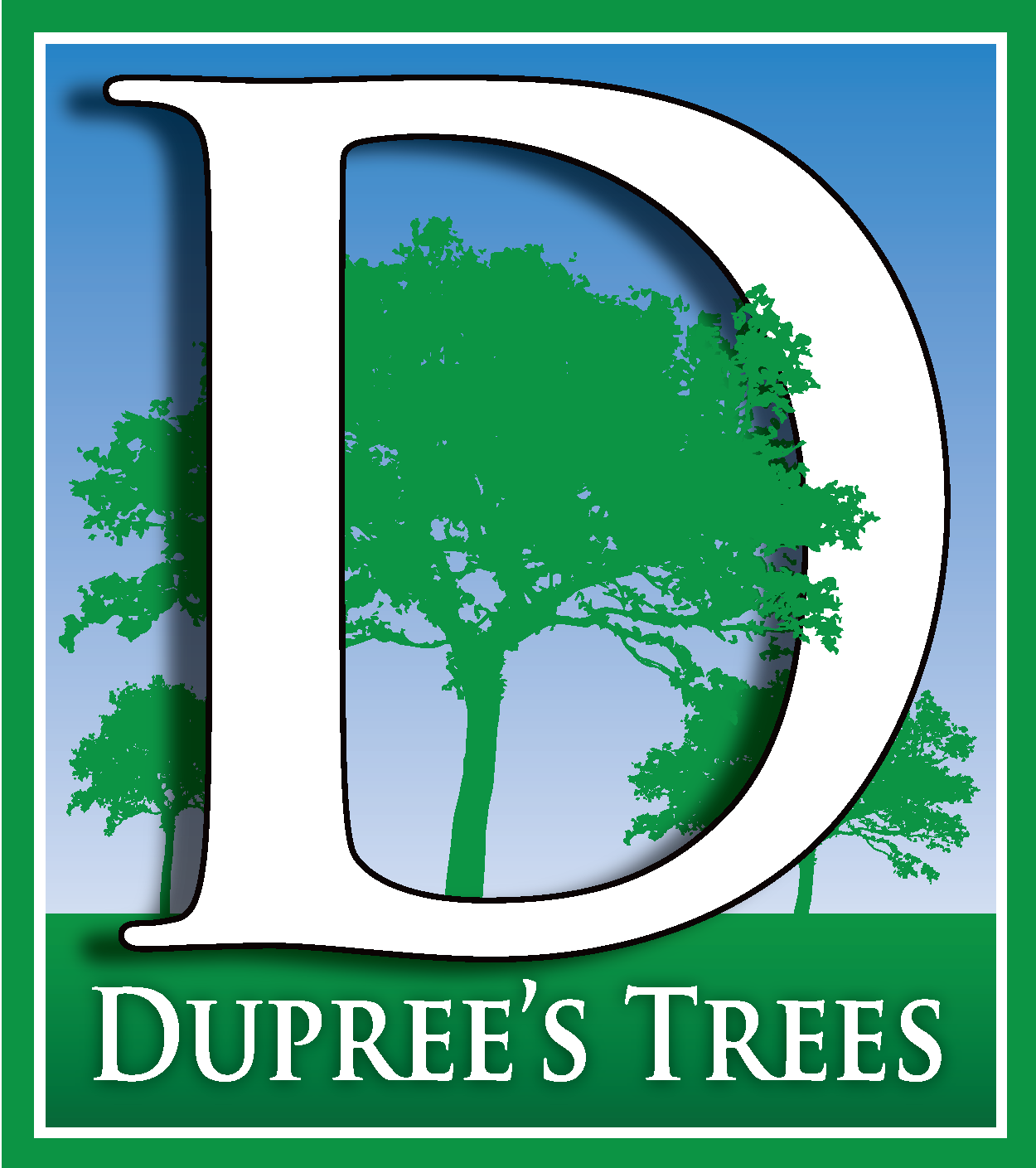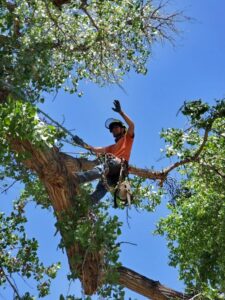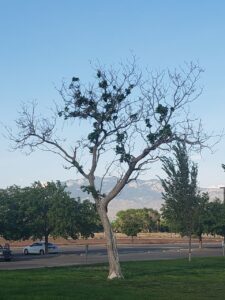Pruning trees is essential for the health, aesthetics, and safety of the surroundings. In some cases, correct pruning can also instigate new growth of branches or fruit. And in some extreme cases pruning is essential for fire prevention and disease prevention. In this article, I’ll teach you how to prune a tree correctly and the best time to do it.
Why is pruning necessary?
Pruning a tree serves various purposes and is crucial for the overall health, aesthetics, and safety of the tree and its surroundings. Here are the primary reasons why you may want to prune a tree:
1. Tree Health: Pruning can help maintain a tree’s health by removing dead, diseased, or insect-infested branches. It also allows more light and air to reach the inner parts of the tree, which can prevent disease and improve growth.
2. Safety: Overgrown or dead branches can pose a risk to people, buildings, and power lines, especially during storms or high winds. Pruning such branches reduces this risk. Moreover, pruning also helps maintain the structural integrity of the tree, reducing the chances of branch breakage.
3. Aesthetics: Pruning can improve a tree’s appearance, making it more pleasing to the eye. It’s often used to shape trees and encourage them to grow in a particular direction or form.
4. Stimulate or Restrict Growth: Pruning can stimulate growth in sparse areas of a tree and restrict growth in areas where the tree is becoming too large.
5. Fruit Production: For fruit trees, regular pruning can improve the size and quantity of the crop. Pruned trees often produce more fruit and are less prone to disease.
6. Improve Views: In landscapes, trees can sometimes obstruct views or block sunlight to gardens and homes. Strategic pruning can address these issues.
7. Prevent Disease Spread: If a tree has a disease, pruning the affected parts can prevent the disease from spreading to the rest of the tree or to surrounding trees.
Remember, while pruning is beneficial, improper pruning can harm a tree’s health and vitality. Therefore, it’s essential to know the right techniques or hire a professional to ensure the tree is pruned correctly.
The 3 most basic types of pruning cuts
- Removal cut – this type of cut is done at the branch collar from the main stem of the tree. Removal cuts are usually used when removing large branches to reduce size or change the shape of a tree. A common removal cut is called a “raising cut” which is when lower branches are removed to provide clearance for houses, cars, lawn mowing, sidewalks, etc.
- Reduction cut – this type of cut is used to reduce the size of a tree. A branch is cut at the first juncture that is large enough (see diagram below).
- Heading cut – also known as “topping,” heading cuts are the most controversial type of tree prune. This type of cut is done to a tree’s main leader or stem to reduce its height. Usually, heading cuts are used to reduce a tree from powerlines. Here is an entire article on why heading cuts or topping should not be done (except in special situations by professionals).
Here is a diagram of the 3 main types of pruning cuts:

The correct tools for tree pruning
The best tool for pruning is a sharp one! You can use a pair of hand snips (also known as pruning shears) for small branches. Larger branches will require a handsaw or chainsaw. We highly recommend consulting a local professional for large pruning projects, especially if you aren’t familiar with these tools.
The best all-around tool for general pruning use is a pruning handsaw, pictured below. Handsaws are fantastic because they are versatile and lightweight. You can also find pole saws for branches that are out of reach.

What is the best time of year to prune a tree?
Generally, the best time to prune trees is when the weather is cold. This is because during the winter, trees are dormant. A second reason to prune during the winter is that the leaves have fallen, making visibility into the branches much better.
We’ve written an entire article called When is the best time to prune trees that you can visit here for more information about the best time to prune.
Common pruning mistakes to avoid
Proper tree pruning can enhance the health, growth, and aesthetic appeal of trees. However, improper pruning can cause significant damage, potentially leading to tree decline or even death. Here are some common tree-pruning mistakes that you should avoid:
1. Topping the Tree: As discussed earlier, topping is a harmful practice that involves removing a large section of the top of a tree’s crown, which can lead to numerous problems.
2. Over-Pruning: A common mistake is to remove too much of the tree at once. A good rule is not to remove more than 25% of the tree’s total branches. Removing too much of the tree can stress it and trigger excessive new growth.
3. Improper Cutting Techniques: Cuts should be made at the branch collar, the small ridge where the branch meets the trunk. Making cuts too close to the trunk (flush cuts) can cause substantial damage and slow healing.
4. Pruning at the Wrong Time: The timing of pruning can significantly affect a tree’s health. While many trees are best pruned in late winter or early spring, others may have different requirements.
5. Neglecting Safety: Pruning trees, especially huge ones, can be hazardous. Always look to a professional to handle large tree prunes and removals.
6. Ignoring Tree Health: Pruning a diseased or pest-infested tree without proper precautions can spread the problem to other trees.
7. Not Pruning at All: While it’s possible to over-prune, it’s also a mistake to ignore pruning altogether. Regular pruning helps to maintain a tree’s health and aesthetic appeal.
8. Cutting the Branch Stub: Leaving a stub after removing a branch can cause decay to enter the trunk and lead to further damage.
9. Using Dull Tools: Dull tools can cause ragged cuts and damage the tree.
When to hire a professional tree pruner
Consider hiring a professional tree specialist to avoid these mistakes, especially for larger trees or more complex jobs. They have the training and equipment to prune your trees properly, promoting their health and ensuring their beauty for years to come. If you’d like our professional and free consultation on tree pruning and removal, contact us here!




